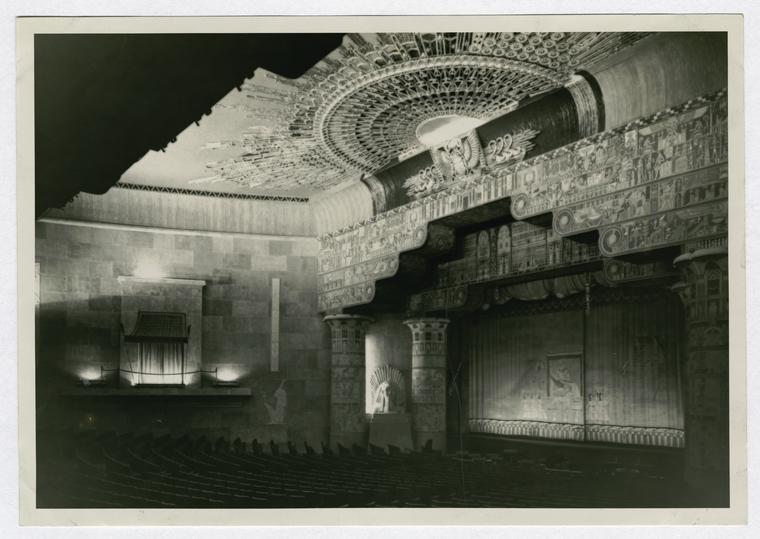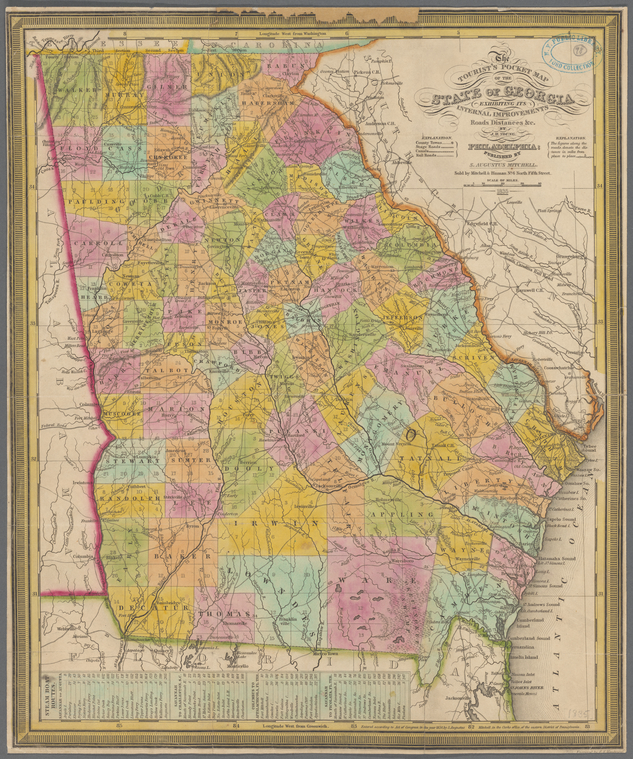Oscar Night! Researching Local History at the Movies

The Academy Awards show—practically a national holiday—airs this coming weekend. Seven of the nine Oscar nominees for Best Picture are set in the past. For example, The Irishman is based on a true crime book and Little Women upon a novel; 1917 is an original story set during a real historical event (World War I) while Once Upon a Time in…Hollywood uses a real historical event to grind up the popular memory of the heretofore like ice for margaritas in Leonardo DiCaprio's vintage blender.

“The moment you introduce a writer, a director, and actors,” writes film critic Molly Haskell in the New York Times, “you’re in the land of make-believe.” Yet, though non-truths may be excused in other aspects of our lives, we seem to demand accuracy in our fictional entertainment—like how those engines really sounded in Ford v Ferrari; the look of Mr. Rogers’ cardigan sweaters in A Beautiful Day in the Neighborhood; Judy's stage outfits in Judy; and Jimmy Hoffa's hairdo in The Irishman.
The first place to cross-check the realness of history's depiction in film is the public library. After all, visits to U.S. libraries outnumbered visits to U.S. movie theaters in 2019. As reference librarians in the Milstein Division of U.S. History, Local History, and Genealogy, my colleagues and I field numerous questions from visitors about what happened when and how to find out more.
In anticipation of the showdown in La La Land this weekend, here are three nominated flicks—and two that should have been (in my opinion)— that made good use of research to bring local history to life.
The Irishman
Framed by the memory of Teamster boss and mob hitman Frank Sheeran, The Irishman brings to life American history between 1950 and 2000 and is a meditation over time on the emotional intelligence of Cold War America. Location scouts canvassed locations in the mid-Atlantic region for architecture that still looks as it did when Kennedy launched the Bay of Pigs invasion, when Joe Colombo was shot at Columbus Circle, and when Tricky Dick was President—like the orange roof of a former Howard Johnson’s in Long Island, or the marinara-red neon signage of restaurant Villa di Roma in Philadelphia. This is the same type of research patrons often conduct in the Milstein Division—a genealogist might trace an individual to a certain historical locale and want to know more about what the buildings looked like, or get a sense of the demographic character of the neighborhood, or know the commercial makeup of an address.
Relating to the regions depicted in The Irishman, there are numerous historical and pictorial works on Philadelphia in Milstein collections. Or if you wanted to follow-up on whether the mafia was really involved in the JFK assassination, on the open shelves in our reading room is the two-volume, desert island beach-read Conspiracies and Conspiracy Theories in American History. Also, the book from which the movie was adapted, I Heard You Paint Houses, demonstrates precise, measured, quadruple-checked research methods. Of course, other than sartorial, the type of accuracy fundamental to Martin Scorsese is emotional, psychological, spiritual. "The point is," the director has said about the source material, "it’s not about the facts."

Dolemite Is My Name
Augmented by 1970s polyester matador pants and purple felt homburg hats, Rudy Ray Moore is all persona—his character-within-a-character "Dolemite" is a kung–fu chopping, toast-speechifying urban outlaw, portrayed by a potbellied clerk at the old Dolphin’s of Hollywood Record Shop who appropriates the street lingo and alleyway histrionics of inner city hustlers as his own. Chitlun Circuit verisimilitude and a handful of ripe Los Angeles locations—still viable as versions of themselves from back in time—invigorate this Oscar-snubbed, gut-busting slice of history in black pop art. Dolemite is also an example of filmmaking-about-filmmaking; as a point of entry into the history of the industry—and as a complement to the local history of the movie colony called Hollywood—see the Entertainment Industry Magazine Archive, a periodical database available at NYPL that includes showbiz mags Variety and Boxoffice.
Richard Jewell
The 1990s now qualify as "history"— it has been a very long time since Brad thanked Gwyneth at the close of his Golden Globes speech, the same year in which the events dramatized by Clint Eastwood in Richard Jewell took place—as if taken straight out of the pages of American Decades, another multi-volume reference set in our open stacks. An early sequence shows a joyous outdoor audience at the 1996 Olympics communing in step to the iconic Macarena—what better resource to indicate the mind and soul of a time and place than people dancing? The innocent celebration is soon followed by a terrorist bombing. Fans of the film who might be curious to compare the media frenzy depicted in the movie to the actual published news articles can search the availability of the Atlanta Journal-Constitution in the NYPL research catalog. Patrons sometimes misapprehend our division as focused only on the history of New York City, while the research purview of librarians in the Milstein Division covers all fifty states. There is plenty of material on the history of Atlanta, which researchers might then cross-reference with collections in the Map Division. Richard Jewell is one of those few Hollywood movies that takes place in locales other than NYC or LA; more uniquely, its characters live in the suburban South, a local history that rarely makes it to mainstream movie screens.

Once Upon a Time in…Hollywood
In local history research, anything that provides dimension to a time and place counts as a resource. Useful, relevant, or evocative information is often found in ephemeral materials, like a menu, illustrated flyer, business card, or newsclipping. Once Upon a Time is abundant with such stuff, as if a historical guidebook to a certain identity of the city of Los Angeles in 1969. In addition to collections of historical guidebooks to U.S. cities—which also serve as rich sources for local history research—the Milstein Division in Room 121 holds a vast collection of uncataloged local history ephemera devoted to all U.S. regions including tourism pamphlets, promotional booklets, and real estate brochures— much of it highly illustrated, and the bulk of it dating between the 1880s and 1930s. Los Angeles city directories in Milstein collections date from the 1860s through the 1940s, with specific subject directories up to the 1980s. In Once Upon a Time, chockablock local history materials include old movie marquees, 60s radio ads, cans of dog food, neon facades at twilight, cigarette packs, beer cans, Western paperbacks, a Craig 212 reel-to-reel tape recorder, gold-rimmed aviator sunglasses, an eggshell blue Karmann Ghia blazing down Sunset Boulevard, Brad Pitt’s moccasins…

Us
Though set chiefly in the present day, Us is steeped in the trauma wrought by events that originated in the 1980s—maybe not so unlike real life. The amusement park at Santa Cruz Beach Boardwalk is employed in the opening sequence as a mind-bending backdrop. The Postcard Collection in our division includes images of this seaside locale going back to the early 1900s. Us is a horror flick that employs a “real” event—here, Hands Across America—as a narrative springboard for an original creative vision, both thought-provoking and heebiejeebies-inducing. It would be surprising if researchers for Us had not looked up Hands Across America using historical newspaper databases, which are some of the most commonly recommended and heavily-used resources in our division. The contents of newspapers yield a multiplicity of information—news reports, advertisements, photographs, legal and business information, tabloid gossip, first person accounts—in addition to revealing how the public perceived things at a certain time in history. The Milstein Division holds public classes on conducting research with newspapers. Check the listings for the next showtime…
… and see you at the after-party…

Read E-Books with SimplyE
 With your library card, it's easier than ever to choose from more than 300,000 e-books on SimplyE, The New York Public Library's free e-reader app. Gain access to digital resources for all ages, including e-books, audiobooks, databases, and more.
With your library card, it's easier than ever to choose from more than 300,000 e-books on SimplyE, The New York Public Library's free e-reader app. Gain access to digital resources for all ages, including e-books, audiobooks, databases, and more.
If you don’t have an NYPL library card, New York State residents can apply for a digital card online or through SimplyE (available on the App Store or Google Play).
Need more help? Read our guide to using SimplyE.


Comments
Oscars
Submitted by Beth Whjte (not verified) on February 6, 2020 - 10:45pm